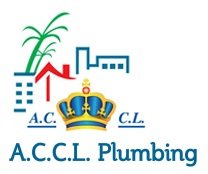The plumbing industry is undergoing a significant transformation, driven by technological advancements, sustainability efforts, and smart home integrations. As we move into 2025, several exciting trends are reshaping the way we think about plumbing systems.
Smart Plumbing Systems
Smart plumbing systems are revolutionizing water management in homes and commercial spaces. These systems use sensors, apps, and Wi-Fi connections to provide real-time insights into water usage, detect leaks, and allow remote control of fixtures. Some notable features include¹ ²:
– Leak Detection Sensors: Advanced sensors send instant alerts to homeowners and businesses in case of leaks, preventing costly water damage.
– Automated Water Shut-off Valves: These systems can automatically turn off the water supply when a leak is detected.
– Voice-Controlled Faucets & Showers: Homeowners can control their plumbing fixtures using voice assistants like Alexa and Google Assistant.
Sustainable Plumbing Materials
Sustainability is shaping the future of plumbing materials, with an emphasis on eco-friendly and recyclable components. Some popular sustainable materials include³:
– PEX (Cross-Linked Polyethylene) Piping: A flexible, durable, and corrosion-resistant material ideal for residential and commercial plumbing.
– HDPE (High-Density Polyethylene) Pipes: Resistant to chemicals, extreme weather conditions, and environmental stress, making them suitable for municipal water systems and industrial applications.
– Bio-Based Plastic Plumbing Materials: Derived from renewable resources, these materials reduce reliance on fossil fuels and lower carbon footprints.
– Graphene-Enhanced Plumbing Materials: Graphene’s exceptional strength, conductivity, and flexibility make it an exciting material for future plumbing innovations.
Water-Efficient Fixtures
Water conservation is a top priority, and 2025 has brought even more efficient plumbing fixtures. Some notable examples include⁴:
– Low-Flow Toilets: Designed to use significantly less water per flush, usually around 1.28 gallons.
– Dual-Flush Toilets: Providing separate options for liquid and solid waste to conserve even more water.
– Water-Saving Faucets: Aerators mix air with water, reducing the amount of water used while maintaining strong pressure.
– Touchless Faucets: Only dispense water when needed, reducing water waste and promoting hygiene.
Energy-Efficient Water Heaters
Energy efficiency is a major concern in plumbing, and solar-powered water heaters are becoming the preferred choice for eco-conscious consumers. Some notable advancements include⁵:
– Solar-Powered Water Heaters: Harness natural energy to reduce reliance on traditional energy sources.
– Tankless Water Heaters: Provide hot water on demand without the need for storage tanks, saving both space and energy.
– Smart Water Heating Systems: AI-powered water heaters learn usage patterns to optimize energy consumption.
Other Notable Trends
– Greywater Recycling Systems: Collect and treat water from sinks, showers, and washing machines for reuse in non-potable applications.
– 3D Printing in Plumbing: Enables custom designs and quick replacements of parts, reducing wait times and costs.
– Augmented Reality (AR) and Virtual Reality (VR) in Plumbing: Changing the way plumbing professionals train, design, and troubleshoot systems.

